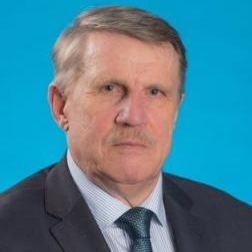Mathematical Modelling Issues in Future Telecommunications and Multiservice Networks
A special issue of Mathematics (ISSN 2227-7390). This special issue belongs to the section "Network Science".
Deadline for manuscript submissions: closed (1 February 2021) | Viewed by 11447
Special Issue Editors
Interests: 5G; mobile communication; unmanned aerial vehicles; QoS; сomputer networks; wireless networks
Special Issues, Collections and Topics in MDPI journals
2. Applied Mathematics and Communications Technology Institute, Peoples’ Friendship University of Russia (RUDN University), 6 Miklukho-Maklaya St., 117198 Moscow, Russia
Interests: queueing theory; applied probability
Special Issues, Collections and Topics in MDPI journals
Interests: performance modeling of communications systems/networks
Special Issue Information
Dear Colleagues,
Over the past few years, there has been an increasing level of research activities worldwide into the design and performance analysis of future wired and wireless telecommunications. Traditionally, the problem is how to share the finite amount of network resources among users of a, from the point of view of technologies and services, heterogeneous telecommunication network, taking into account the huge number of restrictions imposed by the features of technologies and QoS requirements. The problem shows how relevant research is in the area of creating mathematical models and methods of their analysis for evaluating the performance measures of next-generation multiservice networks. There are a number of other problem statements that attract the attention of mathematicians due to their originality and the ability to create new analytical, algorithmic, and numerical methods for analyzing corresponding mathematical models.
We propose in this Special issue to focus on those mathematical models and methods that reflect the specific features of future multiservice networks that differ in essence from past and present ones. We may consider different mathematical approaches based on stochastic processes, queueing theory, statistics, stochastic geometry, and others, if necessary.
Prof. Konstantin Samouylov
Prof. Alexander Dudin
Dr. Dmitri Moltchanov
Guest Editors
Short Bio: Konstantin Samouylov received his PhD in probability theory from the Moscow State University, in 1985, and a Full Doctor of Sciences degree in telecommunications from the Moscow Technical University of Communications and Informatics, in 2005. In 1985–1996, he held several positions at the Faculty of Science of the Peoples' Friendship University of Russia (RUDN University), where he became a head of Telecommunications System Department in 1996. Since 2014, he has been the head of the Applied Probability and Informatics Department, and since 2017, he has also held the position of Director of Applied Mathematics and Communications Technology Institute (IAM&CT) at the RUDN University. He was visiting professor/professor-research at Lappeenranta University of Technology and Helsinki University of Technology (Aalto), Finland; Moscow Technical University of Telecommunications and Informatics, Russia; Moscow International Higher Business School (Mirbis), Russia; and University of Pisa, Italy. He was a member of the ITU-T SG11 and IFIP TC6 WG 6.7. He has worked in a number of R&D projects within different frameworks, e.g., COST IRACON, projects of Russian Foundation for Basic Research (RFBR), TEKES (Finland) and companies including Nokia, Telecom Finland, VTT, Rostelecom, etc. He is a member of editorial boards and reviewer of several scientific magazines, and he is co-chair and TPC member of several international conferences. His current research interests include applied aspects of probability theory and stochastic processes, queuing and teletraffic theory, performance analysis of 5G/5G+ networks, resource allocation in heterogeneous wireless networks, social networks, and big data analysis. He has authored and co-authored over 150 scientific and conference papers and six books. Prof. Samouylov’s honors include the 2018 IEEE GLOBECOM Conference Best Paper Award.
Manuscript Submission Information
Manuscripts should be submitted online at www.mdpi.com by registering and logging in to this website. Once you are registered, click here to go to the submission form. Manuscripts can be submitted until the deadline. All submissions that pass pre-check are peer-reviewed. Accepted papers will be published continuously in the journal (as soon as accepted) and will be listed together on the special issue website. Research articles, review articles as well as short communications are invited. For planned papers, a title and short abstract (about 100 words) can be sent to the Editorial Office for announcement on this website.
Submitted manuscripts should not have been published previously, nor be under consideration for publication elsewhere (except conference proceedings papers). All manuscripts are thoroughly refereed through a single-blind peer-review process. A guide for authors and other relevant information for submission of manuscripts is available on the Instructions for Authors page. Mathematics is an international peer-reviewed open access semimonthly journal published by MDPI.
Please visit the Instructions for Authors page before submitting a manuscript. The Article Processing Charge (APC) for publication in this open access journal is 2600 CHF (Swiss Francs). Submitted papers should be well formatted and use good English. Authors may use MDPI's English editing service prior to publication or during author revisions.







